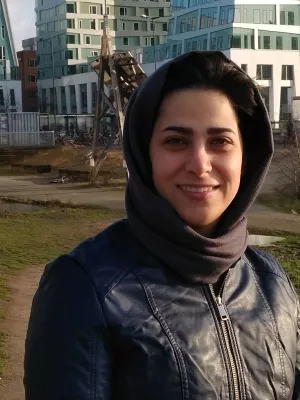
Behshid Khodaei
PhD Student

3D SURFACE GENERATION FROM AERIAL THERMAL IMAGERY
Author
Summary, in English
determined. Finally, multi-resolution dense image matching algorithm is used to create 3D point cloud of the scene. Potential of the proposed method is valuated based on thermal imaging cover an industrial area. The thermal camera has 640×480 Uncooled Focal Plane Array (UFPA) sensor, equipped with a 25 mm lens which mounted in the Unmanned Aerial Vehicle (UAV). The obtained results show the comparable accuracy of 3D model generated based on thermal images with respect to DSM generated from visible images, however thermal based DSM is somehow smoother with lower level of texture. Comparing the generated DSM with the 9 measured GCPs in the area shows the Root Mean Square Error (RMSE) value is smaller than 5 decimetres in both X and Y directions and 1.6 meters for the Z direction.
Department/s
- Division of Water Resources Engineering
- Centre for Advanced Middle Eastern Studies (CMES)
Publishing year
2015
Language
English
Publication/Series
International Archives of the Photogrammetry, Remote Sensing and Spatial Information Sciences - ISPRS Archives
Links
Document type
Journal article
Publisher
The International Society for Photogrammetry and Remote Sensing
Topic
- Other Social Sciences
Status
Published
ISBN/ISSN/Other
- ISSN: 1682-1750

